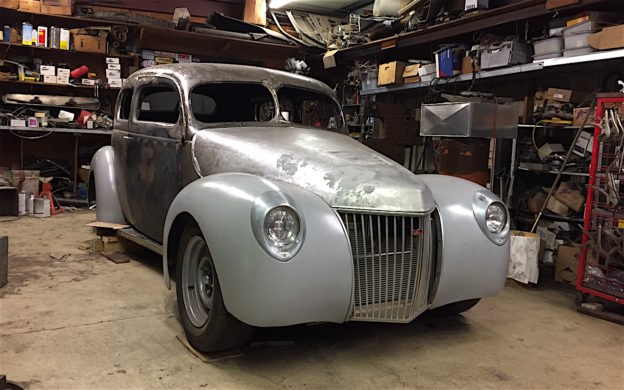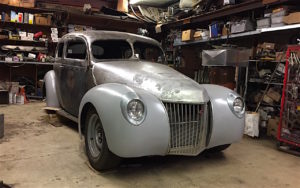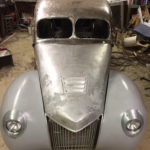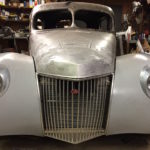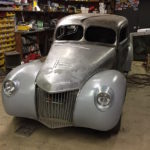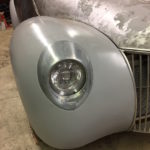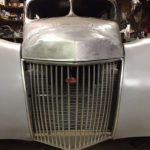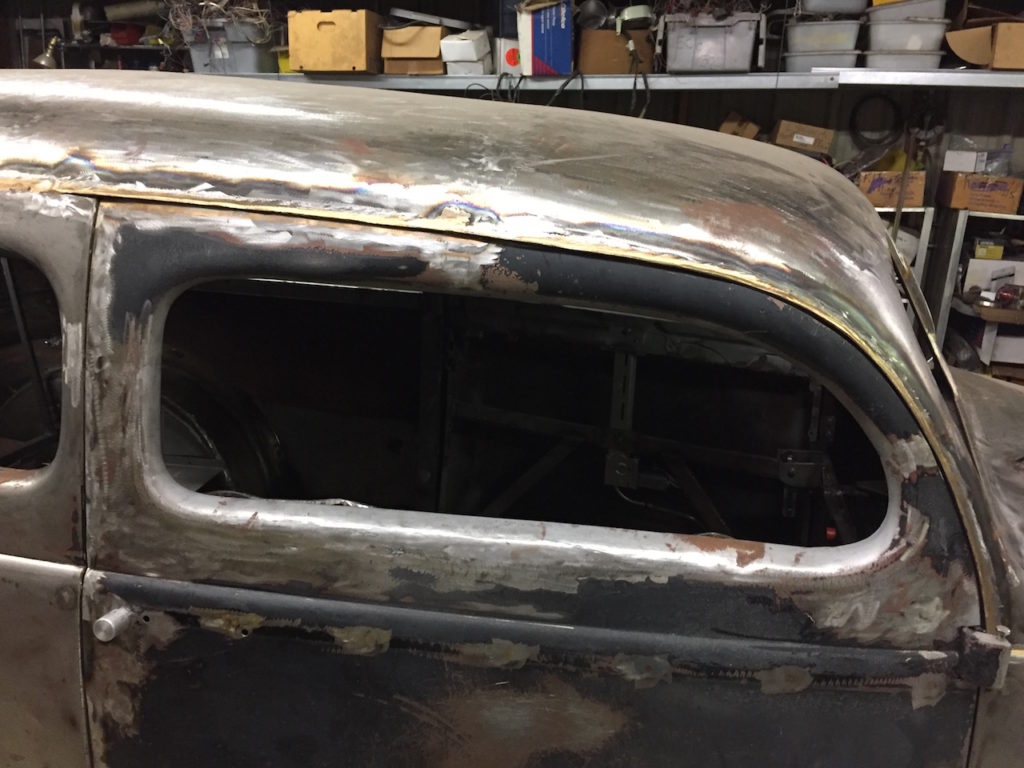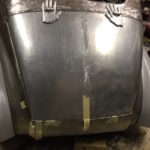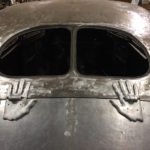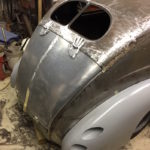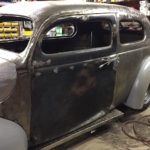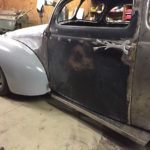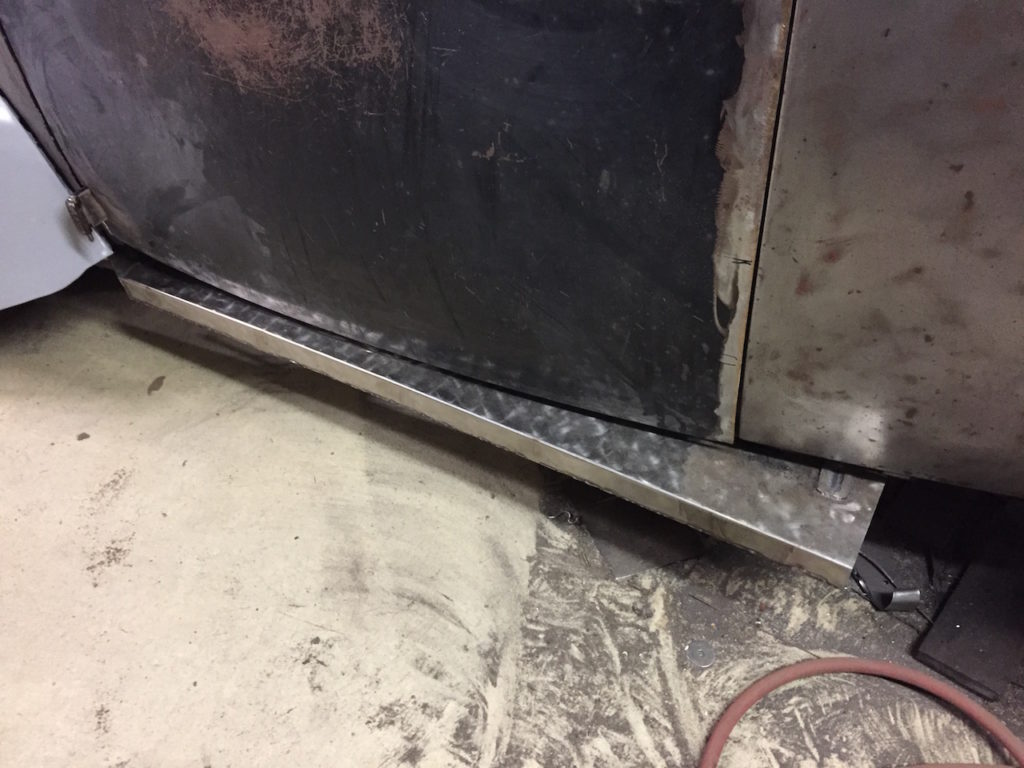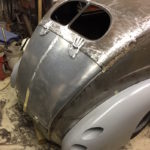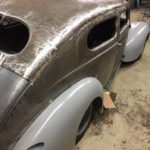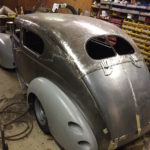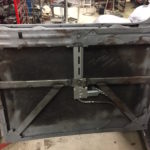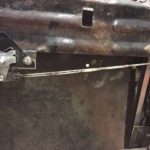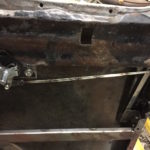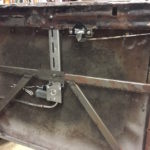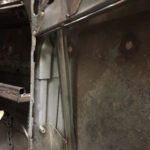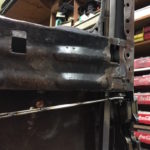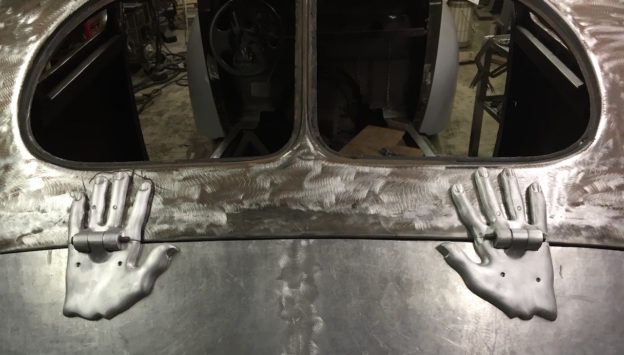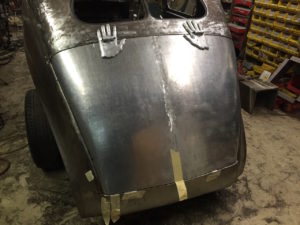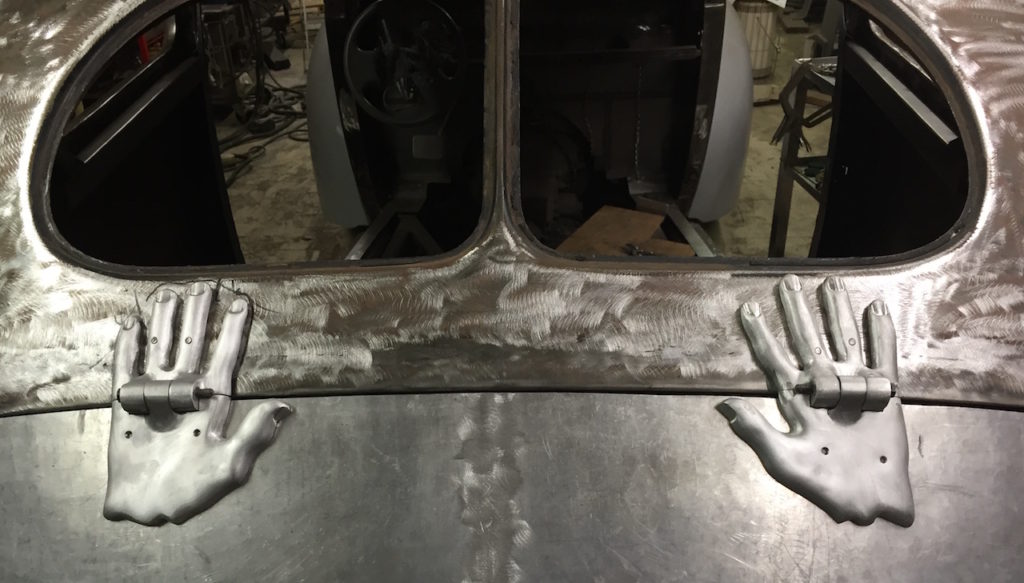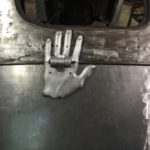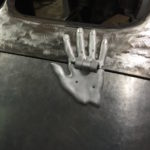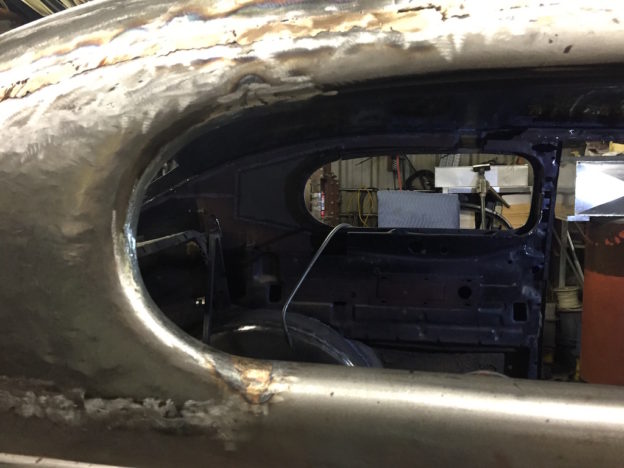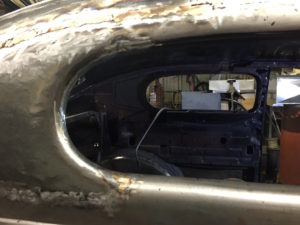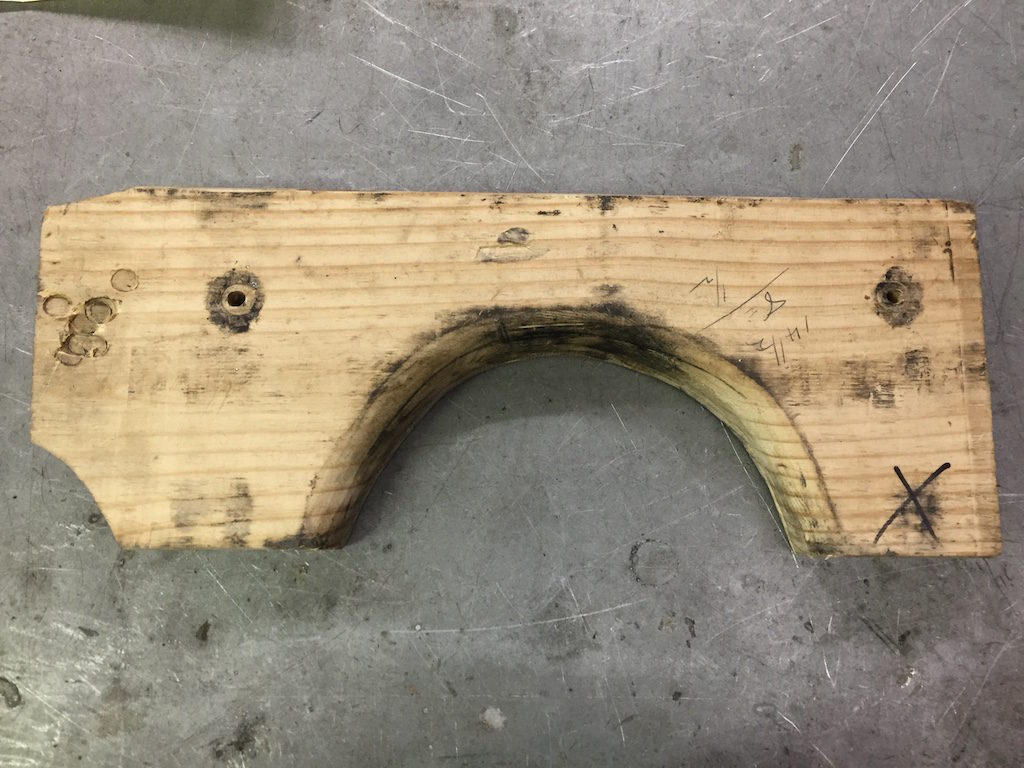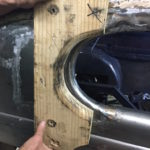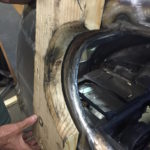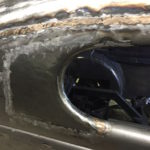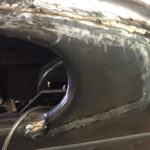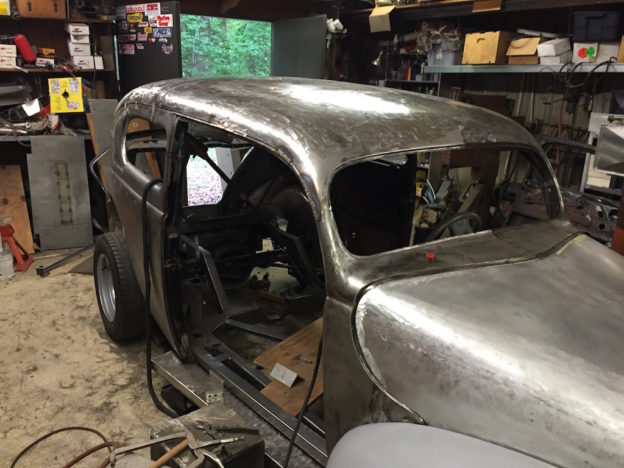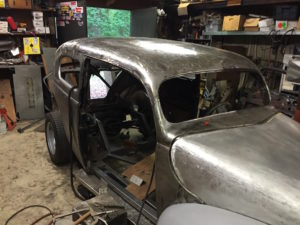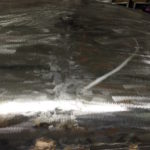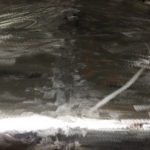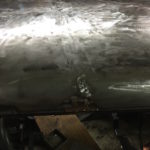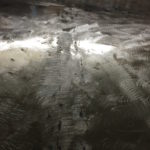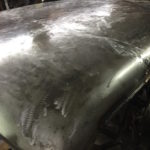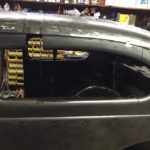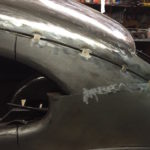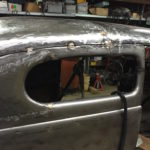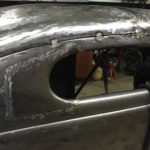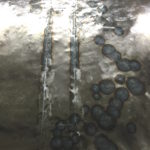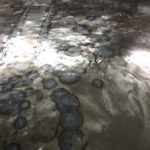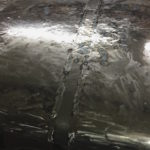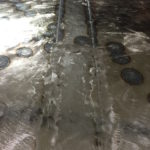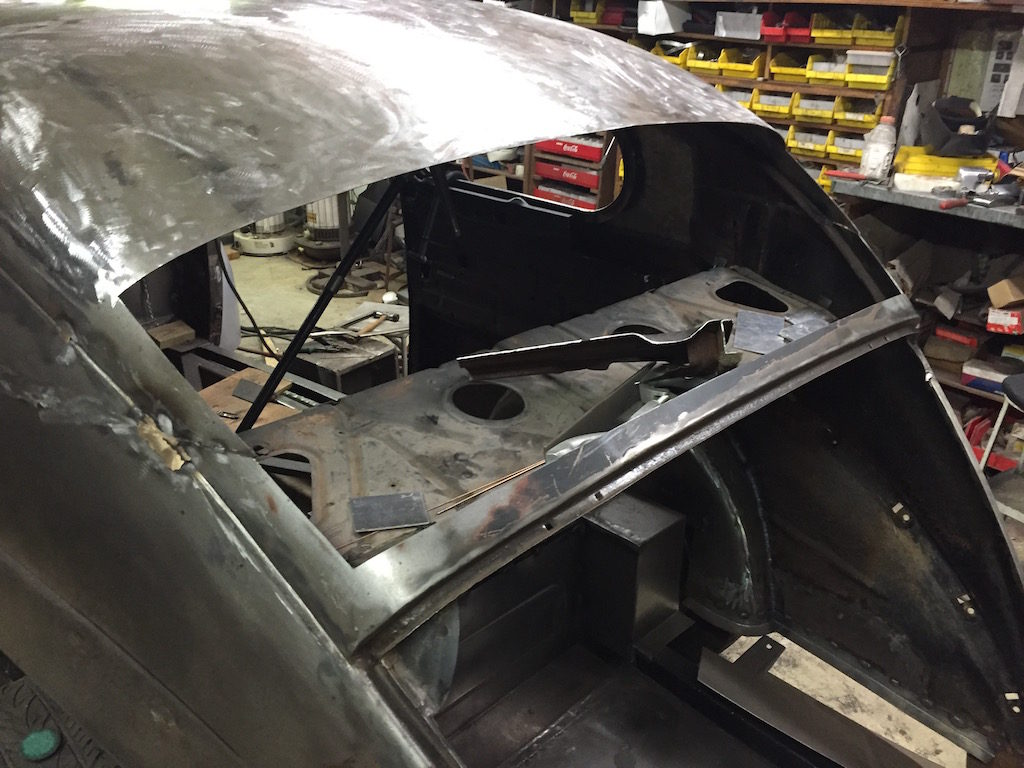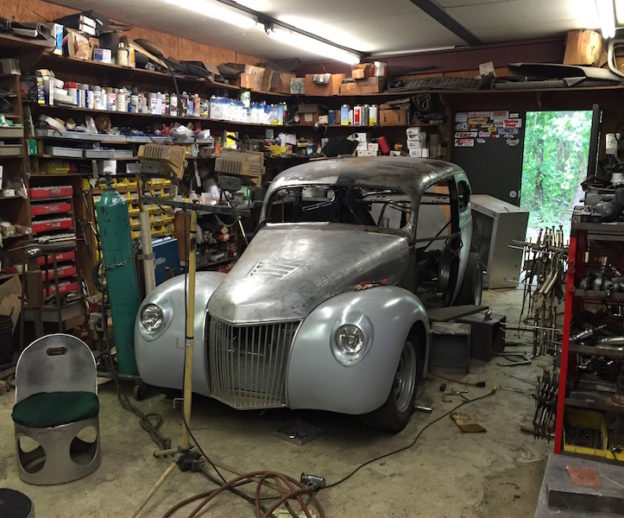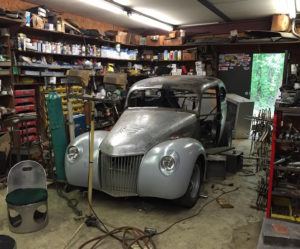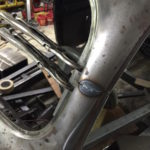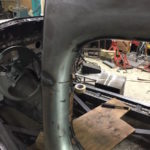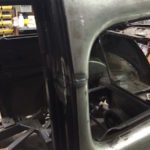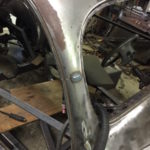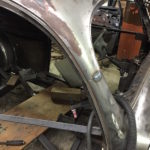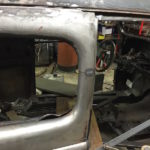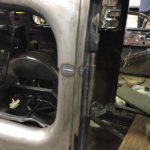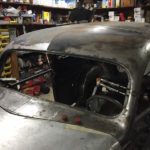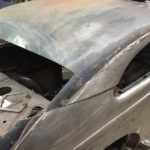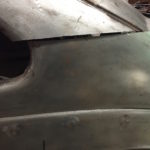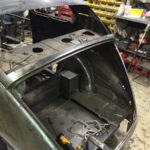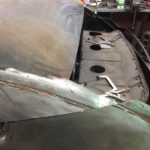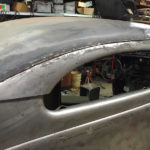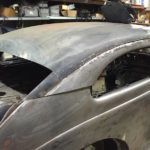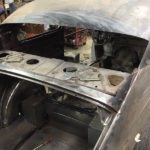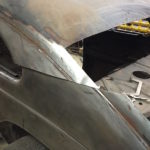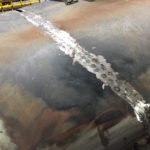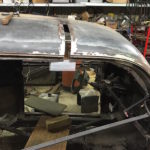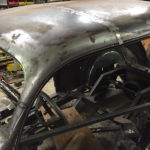Today, I stopped by Jim’s shop – as I always do on Saturdays – and found the 1940 Ford taking shape, essentially fully mocked up. My cousin Jim has put a lot of effort into his latest creation. So I took a bunch of photos so this blog post would show off the current progress.
So the following pictures show the front of the car. I’ve talked about the aluminum hood before because, well… It is just awesome. The heat extractor comes right out of the pages of the sales brochure for the 2014 Camaro SS (like mine). This aluminum hood is light as a feather too. But… The hood is not the only remarkable detail. Take a look at the grill, the “Ford” emblem latch release and the frenched headlights…
Pretty nifty, huh? Well, there is more… Next, let me show you how the doors are shaping out. There has been a huge amount of work done here:
In an earlier article, I wrote about how Jim had chopped the top on the 1940 Ford. It required not only cutting the posts, but also adding material to stretch the top to compensate for the change in the roof’s geometry. This change also forced alteration of the rear windows. The next challenge required altering the shape of the doors. As you might have imagined, Jim had to cut and add material to the doors so they would fit properly. And if you haven’t noticed, check out the precision in the door/body gap. It is very tight.
Artistic Features
Jim builds cars to suit him and by definition this means some features might make sense just to his tastes. “Must be nice”, huh? I call these “artistic features” and the 1940 Ford already has several…
Trunk Hinges
Here is the completed trunk hinges shaped to match a person’s hands. The aluminum hinges are made from a milling machine, files and an air powered engraving tool – that is all! Before you say “Nah!”, ask yourself how you would craft this from a thick chunk of aluminum?
Door Handles
Jim’s skill are once again showcased in the door handles for the 1940 Ford. Take a look:
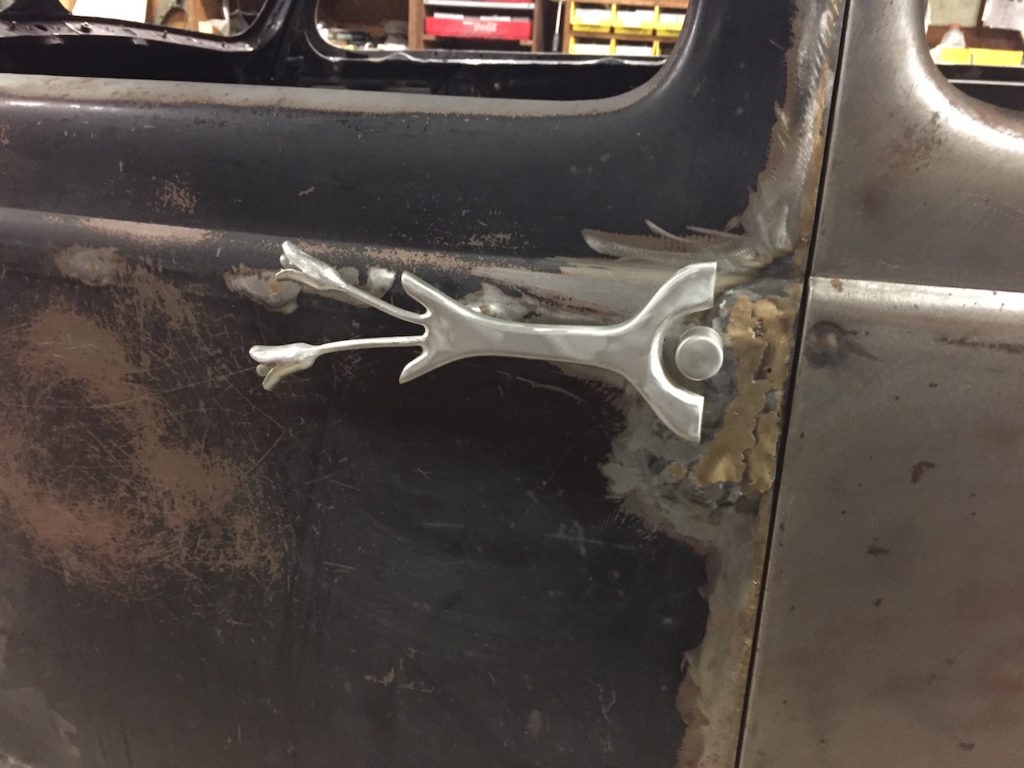 This door handle is made, not bought. I asked Jim about it, and he said in his mind it represents a vase with two rose buds in it. The rose buds have petals and yes, this is all hand-made from aluminum. The button operates a latch mechanism of Jim’s own design (more pictures later).
This door handle is made, not bought. I asked Jim about it, and he said in his mind it represents a vase with two rose buds in it. The rose buds have petals and yes, this is all hand-made from aluminum. The button operates a latch mechanism of Jim’s own design (more pictures later).
Here are a couple of pictures showing the door handle from a few a couple of feet away:
Running Board / Exhaust
Because Jim wanted to keep things simple under the frame, he made the running boards serve two purposes: a) finish the look below the body and b) exhaust. Yes, these running boards serve as exhaust pipes. You can see this in the two pictures in the previous gallery and in the next photo:
Back of the Car
From the back of the car we can see the recessed tail lights. You can also see the scars on the roof of the car from the welding of more panels used to solve the missing material from chopping the top.
The Engine
The 1940 Ford has been designed to use a Chevrolet LSx engine…
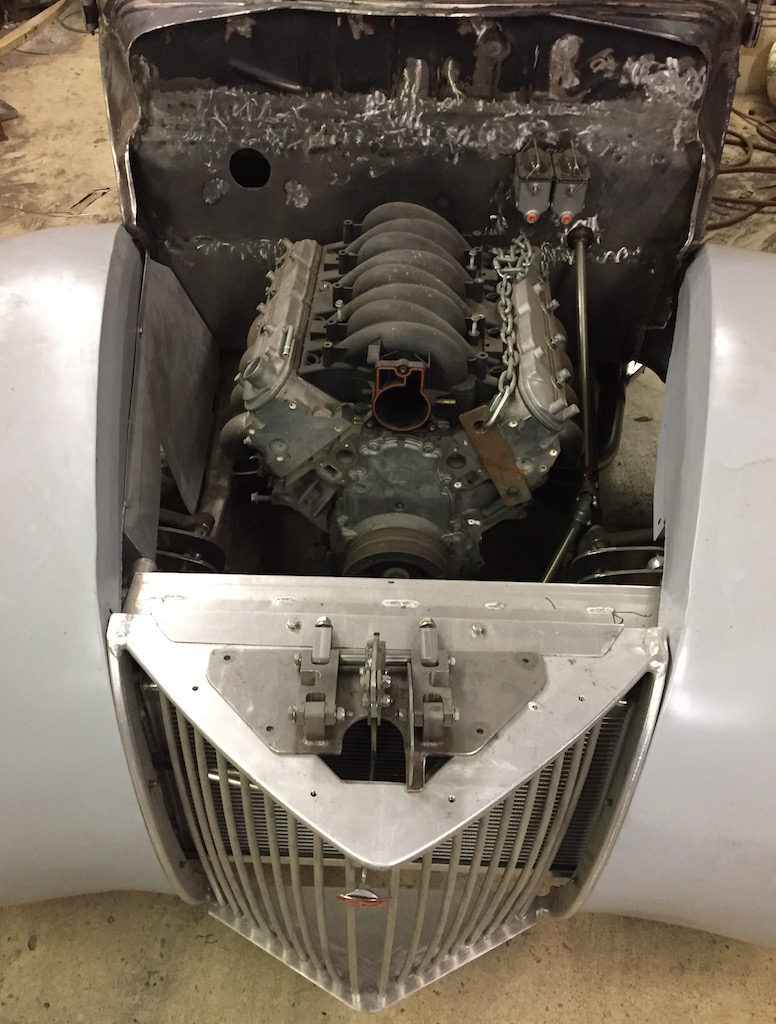 And as a bonus, you can see what the hood latch mechanism looks like. Yes, this is yet another bit of Jim’s handy work. The latch has been made from scratch and features a hinge for the hood, opening forward. The “Ford” emblem (seen below the “V”) is attached to a rod that actuates the latch release.
And as a bonus, you can see what the hood latch mechanism looks like. Yes, this is yet another bit of Jim’s handy work. The latch has been made from scratch and features a hinge for the hood, opening forward. The “Ford” emblem (seen below the “V”) is attached to a rod that actuates the latch release.
Doors
Here is the inside of the doors. This looks very simple but it shows the door latch release mechanism and the power window actuators.
A great deal of time and engineering went into this effort. You see the rods that actuate the door latch from the inside have to clear the window runners.

